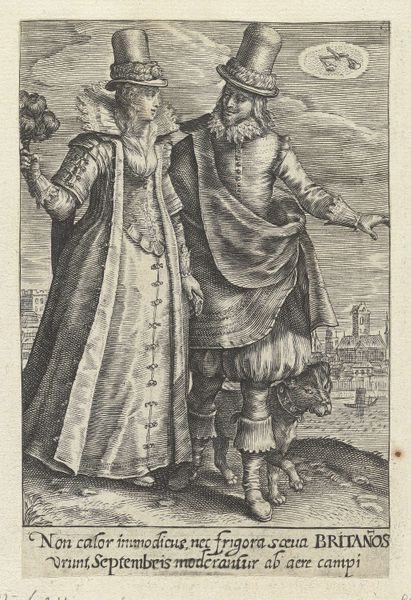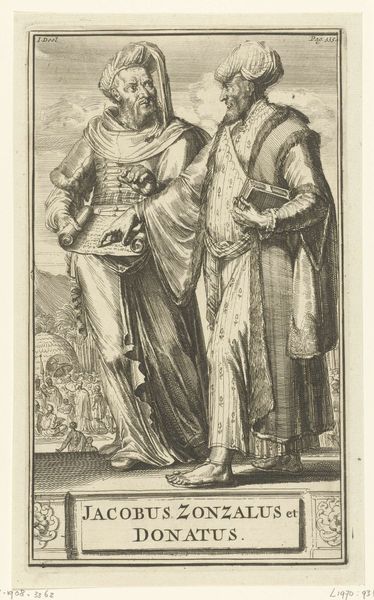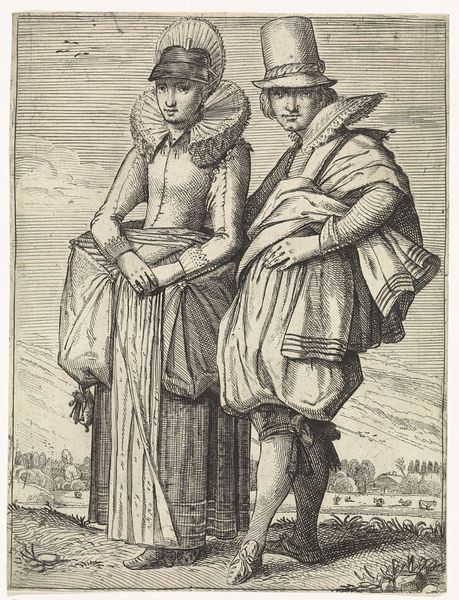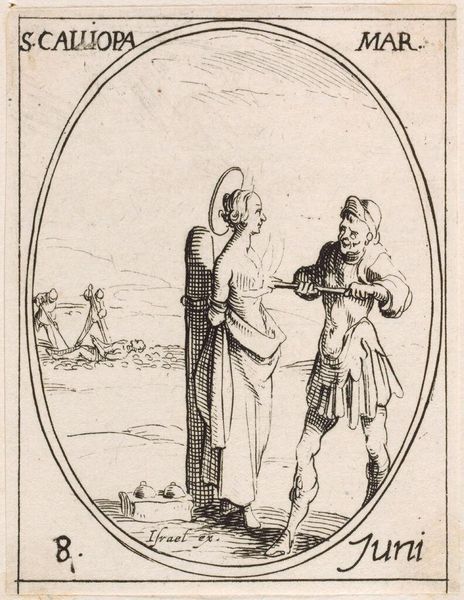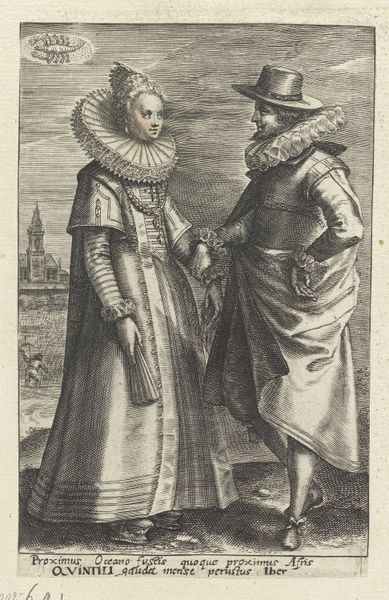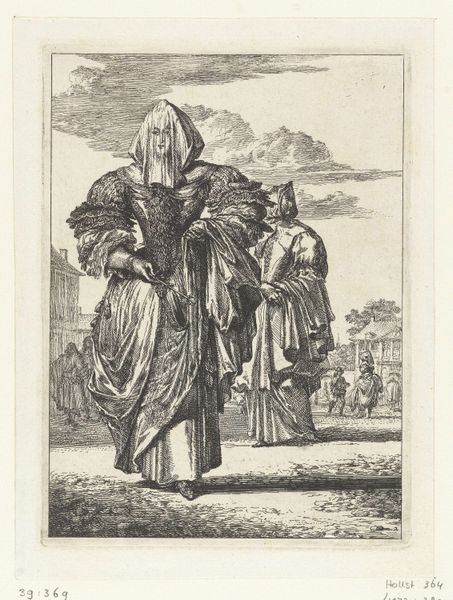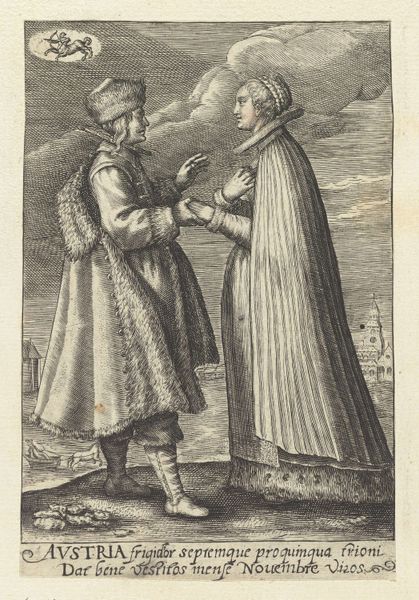
print, engraving
#
portrait
#
baroque
# print
#
old engraving style
#
portrait drawing
#
genre-painting
#
dress
#
engraving
Dimensions: height 134 mm, width 85 mm, height 242 mm, width 271 mm
Copyright: Rijks Museum: Open Domain
Curator: This engraving, "Augustus: een paar uit Turkije," or "A Couple from Turkey," was created by Crispijn van de Passe the Younger sometime between 1604 and 1670. It's currently housed here at the Rijksmuseum. Editor: It's immediately striking how much detail van de Passe packed into such a small print. The hatching technique really brings out the texture of the garments. They both seem weighed down by these elaborate, heavy robes. Curator: Van de Passe was known for his prints, of course. Engraving allowed for multiples and thus a wider distribution of imagery. Consider the social and economic context of printmaking. It democratized art to a degree, but also fed a growing market for exotic imagery. The textiles themselves would have been costly to manufacture, let alone transport, speaking to early global trade routes. Editor: Absolutely. And the choice to depict the pair as "Turkish" carries significant weight. Seventeenth-century Europe had a complex relationship with the Ottoman Empire—a mixture of fascination, fear, and political rivalry. Representing them in such a composed manner can be interpreted as both exoticizing them while simultaneously recognizing them as refined and fashionable. The artist does grant the subjects respect but is careful to establish "otherness" too. Curator: Precisely. The engraving technique, though capable of fine detail, inherently flattens the image. This adds a layer of visual "translation," where the sitters’ real presences are filtered through a European artistic lens. Look at the tiny details – their gestures, expressions. One wonders about the labour of the person creating the dress itself and that person's identity compared to the identity of the engraver and the end consumer of the work. Editor: Note the details like the rose adorning both the man's sash and the woman's chest—such careful consideration elevates the portrait. Do we see the same attention to detail throughout society regarding representations of peoples across lines of race and power? The background offers a subtle contrast too, with what appears to be a Western city and ship juxtaposed against the figures who are visibly marked as "other." Curator: It really invites us to consider the power dynamics embedded in representation itself, and how a simple print can encapsulate so much about material culture, labour and trade in the early modern world. Editor: Yes, this work gives us pause to consider cultural exchange and representation in a colonial context. How are those stories are visually communicated through fashion and portraiture?
Comments
No comments
Be the first to comment and join the conversation on the ultimate creative platform.
